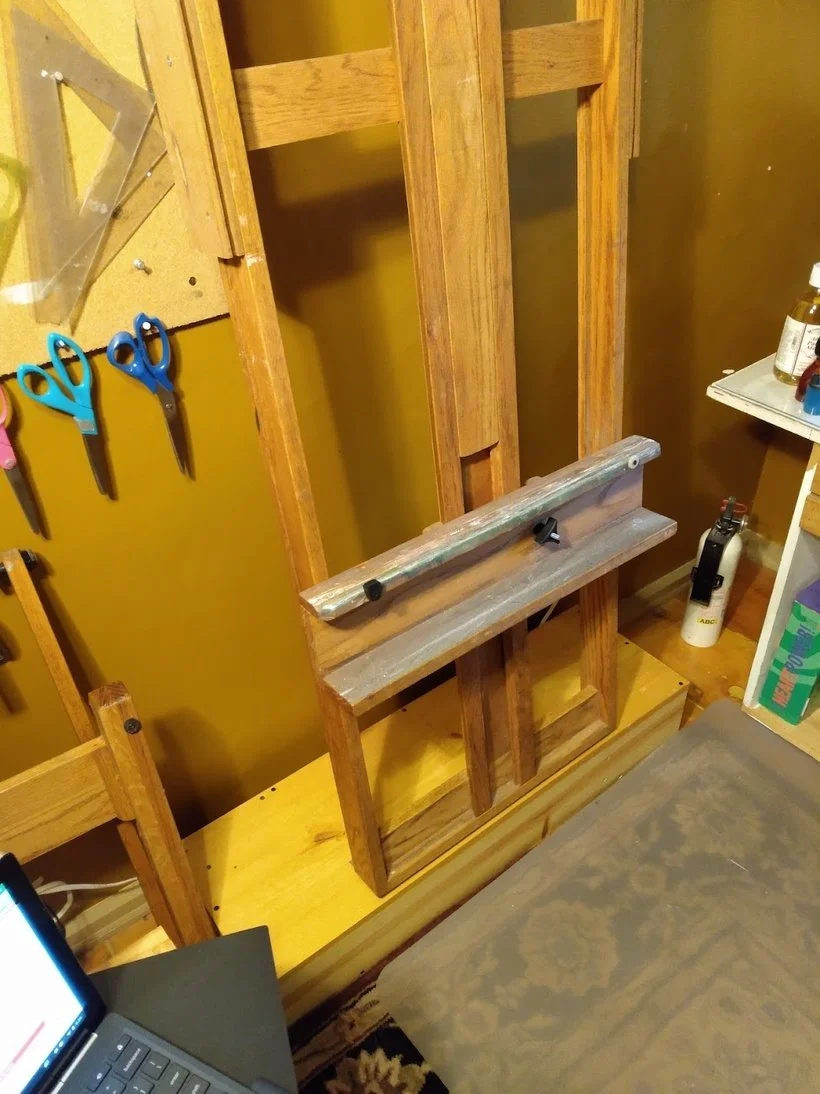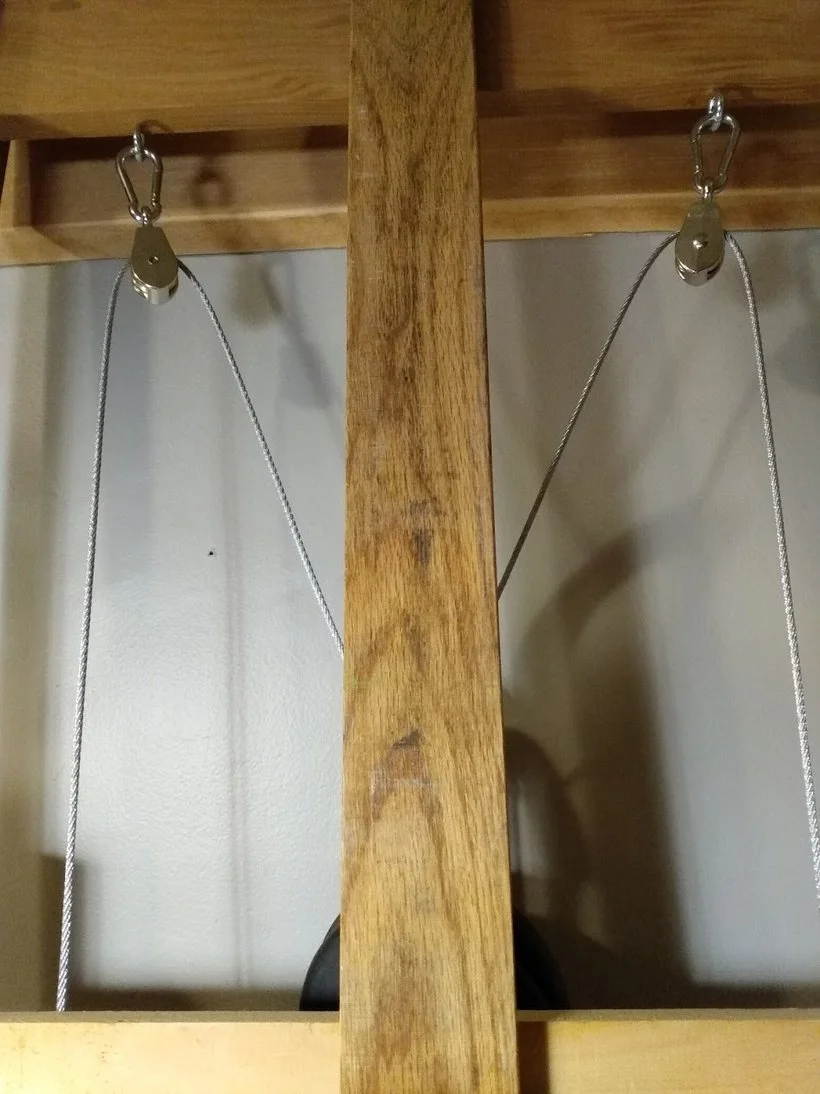A Counterweighted Easel
My oak easel, bought back in the early 90s when I was just starting out as an illustrator, while sturdy, was really only meant for lightweight canvas duty or for smaller boards. If I recall correctly, it was around $200, not an expensive item even though at the time, was a significant investment. And I never thought I'd be taxing it like I am now with such heavy work. My "Letterlocked" painting (completed in 2022) on the heavier cradled hardboard kept slipping down the mast because the spring clamp was giving out trying to hold it in place.
In 2022 I'd gained a very good reason to upgrade my easel to something beefier. I'm now halfway through the execution of a 4- painting botanical commission for a client on 36" x 36" panels. These are significantly heavier (10 lbs each) than anything I've worked on before. When I began the drawings on the panels, the spring clamp completely failed. Yikes. Replacing the spring clamp's knob only fixed the stripped threads on the clamp but it didn't address the issue I faced with working with the heavier panels and the tray’s continued downward slippage on the easel mast.
I needed to fix this problem quickly. I researched manufactured easels to see if buying a good but cheap one was a viable option (and scoured previously owned items just in case, but no luck). It's the fastest answer, but I'd have to shell out well over $700- 1000 for a new one with the sturdiness I'd need so I thought perhaps I could DIY an upgrade for mine instead. The builds of new easels have several good methods by which the tray was more easily raised and locked into place. Many have nifty hand cranks with a worm or screw drive, so I looked for "kits" online to see if I could retrofit my easel with a new crank system, but alas, I didn't find any. One would think easel manufacturers would offer new parts to fix worn out cranks and drives, but nope.
Other styles sported a lightweight hand winch ($30) which was mounted on the easel tray or side rail to raise and lower the painting and tray assembly. A winch, some steel cable, a few pulleys, and some hardware, and I could be back in business fairly quickly.
Then I saw another design (an Italian company) which seemed to offer the most elegant solution: a counterweight. No winches or drives needed. It was comprised of a simple pulley system with a counterweight system behind the easel mast. The weights could be added or subtracted as needed to balance the weight of the artwork which could be raised or lowered with ease. My spring lock wouldn't have to do much except anchor it in place; the weights would do all the heavy lifting. The Italian easel with tubular steel and a gorgeous design was very expensive ($12K!), but I realized I could utilize the same idea for far less money.
I had already modified my easel by extending the "H" rails on either side of the existing oak rails and had added some cross-bracing in the center. The pulleys, eye screws, aircraft cable, crimping ferrules, etc., needed for the counterweight system were easily found in my local hardware store and I spent under $30. I had old York Barbell weights in my garage (thanks, Sandy!) and I ended up using about 12 lbs total, incrementally adding a disc to the carabiner until the panel and tray could be lifted with ease and the spring clamp easily locked into place with one hand-- a necessity when seated with a handful of wet oil brushes in my other hand.
My 250 year-old log house is small and my studio space limited so I had also reduced the footprint of my easel, moving it closer to the wall and bolting it to a low riser which also makes a comfortable footrest when I'm working. To protect the wall from the upper rails, I added a header behind it so that I could attach the rails to the wall, ensuring the easel would be secure and solid. The header is fastened to the wall studs and --bonus!-- adds a nifty place to attach a much-needed swing arm lamp.
Watch here to see how easy it is now to raise and lower the tray & panel with the modification:
Thanks for being here and feel free to drop your thoughts and comments below!




